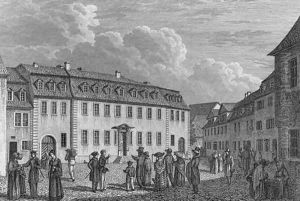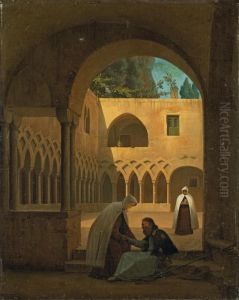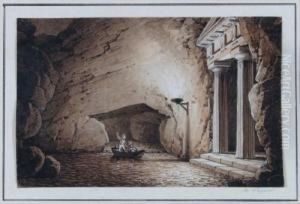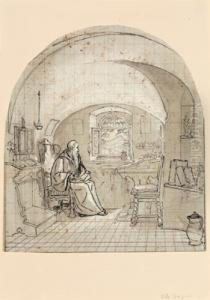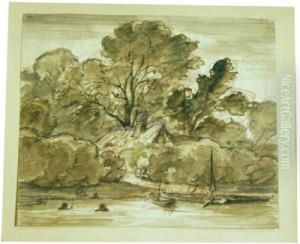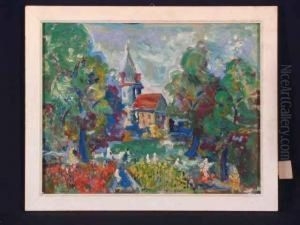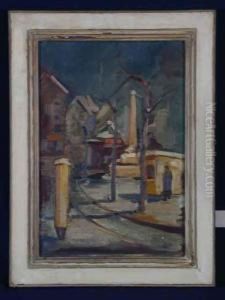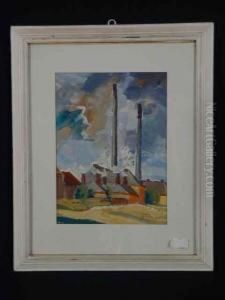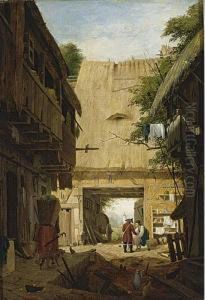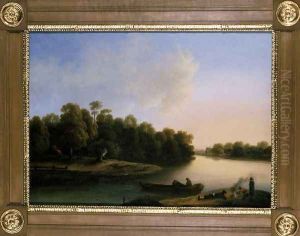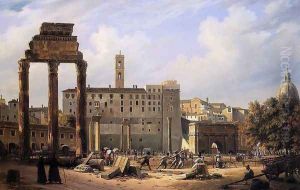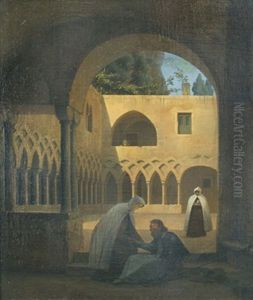Otto Wagner Paintings
Otto Wagner was a pioneering Austrian architect and urban planner, renowned for his pivotal role in the development of modern architecture at the turn of the 20th century. Born on July 13, 1841, in Penzing, a suburb of Vienna, Wagner initially pursued a traditional architectural education at the Polytechnic Institute in Vienna and later at the Academy of Fine Arts. His early career was marked by designs that adhered to historicist styles, common in the Austro-Hungarian Empire during that period. However, Wagner's philosophy and aesthetic evolved dramatically over the years, leading him to become one of the most influential proponents of modernist architecture.
In the 1890s, Wagner began to advocate for a functional, simplified architectural style that rejected ornate historicism. He argued that architecture should reflect the spirit of its age and incorporate modern materials like iron, steel, and glass. This period marked a significant shift in his work, leading to the design of several iconic buildings in Vienna, including the Majolica House, the Postal Savings Bank, and the Stadtbahn (city railway) stations. These projects exemplified his revolutionary approach, featuring clean lines, functional design, and the use of new materials and construction techniques.
Wagner's influence extended beyond his architectural projects through his role as an educator. In 1894, he was appointed professor at the Academy of Fine Arts Vienna, where he influenced a generation of architects with his modernist ideals. His teachings and writings, notably his book 'Modern Architecture,' laid the groundwork for the International Style and had a lasting impact on the development of 20th-century architecture.
Despite his embrace of modernity, Wagner's work was not devoid of decorative elements. He sought to integrate art and craftsmanship into his buildings, collaborating with artists and craftsmen to create unique decorative details that complemented his modernist aesthetic.
Otto Wagner passed away on April 11, 1918, leaving behind a legacy that cemented his status as a key figure in the transition from historicism to modern architectural design. His visionary work and philosophical approach to architecture continue to be celebrated for their significant contributions to the field.
